One of the problems you can encounter when traveling by car is a punctured tire. Using a patch is a fairly common option to work around this issue.
Yet, if the hole is in a position like a tire wall, the problem becomes much more complicated because it is likely that the defensive position will not be patched.
So, how close to the sidewall can a tire be patched? A distance of 6 mm or more from the tire shoulder is required to fit a patch. In other words, if a crack is closer than 6mm, there’s almost nothing you can do about it!
Tire Sidewall OverviewFirst, let’s learn about sidewalls and how to identify them on your tires.
The wall is the rubber part from the outer edge of the rim to the road surface. This part also has the largest area, is the most flexible, and continuously deforms under loads when moving.
How Close To Sidewall Can A Tire Be Patched?As you know, the car’s wall is in a particular location, so it is pretty challenging to troubleshoot the hole here.
Manufacturers also recommend that you not choose the patch option if the spot is on the side of the vehicle or too close to this position. Then, how close to the sidewall can a tire be patched.
You cannot use the patch if the hole is close to the wheel with a gap of less than 6mm. In addition, you should note that if the hole is more significant than ¼ inch, the patch should not be used. In this case, if the patch is small, it cannot cover the hole, causing the wheel to deflate still when moving.
On the contrary, using a large patch can make the wheel more bulky, difficult to move, and unsafe.
Fix Sidewall DamageOther Related QuestionsTo better understand the problems that occur with the tires and how to overcome them effectively, you can refer to the following information.
We’ve put together some frequently asked questions that may help answer your questions on this topic.
Plug a flat tire: Is it possible?People are often concerned about whether it is safe to plug or patch a flat tire.
These two options are pretty standard in repairing or overcoming the problem of flat tires caused by rolling nails or other sharp objects.
The manufacturer still recommends that you better replace the tire with a new one when there is a problem because repairing with a plug or patch when a flat one is not a safe solution.
Yet, the cost of new tires is not cheap, and if you have this problem often, it is a big problem. So, many drivers use a plug or patch when a wheel is punctured.
There is a limit to the number of nails or patches on a product. You can use this option to temporarily fix the problem if you find a few small holes. If the wheel has many large holes or previous patches, it is best to replace it with a new one.
For a detailed guide, check out this video:
How close can a tire patch be to another patch?The gap between patches is also a topic that people are very interested in. When traveling on the road, you may encounter a flat one many times.
As you know, when the tires have had previous patches or punctures in close locations, it is better to replace them. In case
Can you patch a tire on the side of the road?In the case of a puncture on the tire side, the use of stickers is unlikely to have as much effect as you think.
The reason is that its wall adhesion is so thin that relatively few materials can adhere. More specifically, damage to the sidewall will seriously damage the structure of a wheel.
More specifically, damage to the sidewall will seriously damage the structure of a wheel.
The solution to this problem is to insert an extra tube inside the wheel to ensure that you can still turn the whole thing.
How fast can you drive on a patched tire?A patched one will not achieve the same speed and performance as it once was. Therefore, the optimal level you can expect from such a version will not be more than 85 mph. Of course, this is just the limit that many manufacturers recommend, but you should not overdo this limit.
Can you patch a tire with 2 nails in it?The answer is yes! It’s just that the gap between the two punctures is at least 16 inches, and you might seal them with two large patches.
According to many manufacturers, the maximum number of times performed is two times. If more than that, it’s time to get a new one.
ConclusionAs such, a puncture in the side of the vehicle is a unique location where patching is not an optimal solution in this case.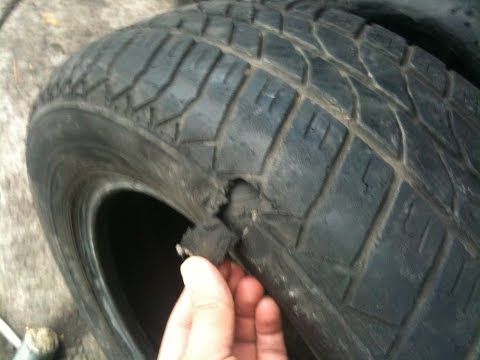 It would help if you changed to a new tire to ensure safety when traveling.
It would help if you changed to a new tire to ensure safety when traveling.
Thank you for following this post!
This post was last updated onThe rule is that any puncture less than half an inch from the start of the internal steel belt on the shoulder or sidewall cannot be patched. If the puncture is less than half an inch from the internal steel belt, then the tire must be disposed of for safety reasons.
What's In This Guide?
As mentioned above, a puncture can only be repaired if it is half an inch or more away from the internal steel belt’s edge. Any closer to the edge or past the edge is unsafe and the tire must be disposed of. The shoulder and sidewall of the tire are considered structural parts and any damage done to them renders the tire unsafe for use.
Any closer to the edge or past the edge is unsafe and the tire must be disposed of. The shoulder and sidewall of the tire are considered structural parts and any damage done to them renders the tire unsafe for use.
Along with the location of the puncture, there are also other variables that limit the repairability of a tire. Firstly, the size of a puncture cannot be greater than one-quarter of an inch. Anything larger than this and the tire needs to be replaced. Similarly, any irregular gashes or cuts exceeding one-quarter of an inch constitute the replacement of the tire.
A cut of any length right through the steel belt also requires a replacement because the structural integrity is compromised. Finally, a new repair may not overlap an old repair as this creates an unsafe situation. It is also noteworthy to mention that a patch by itself is not enough to be deemed a repair.
A properly repaired tire must have the punctured area totally filled by a suitable vulcanizing material or solid rubber stem. Once the puncture is plugged, a patch must be applied to the inner liner of the tire. Other than the above-mentioned damages, a tire can be repaired in the main tread area.
Once the puncture is plugged, a patch must be applied to the inner liner of the tire. Other than the above-mentioned damages, a tire can be repaired in the main tread area.
Once the location of the puncture has been found, the first step in the patching process is removing the tire from the rim. Simply plugging the hole is not a proper repair job and will not last. Once the tire has been removed, the puncture can be better examined to ensure that the damage is not too extensive.
If the damage is repairable, then the puncture needs to be filed smooth to that it does not expand any further. The surface area around the puncture on the inside of the tire also needs to be cleaned a prepared so that the patch holds.
Once the area is prepared the puncture hole can be filled with either a suitable vulcanizing material or a solid rubber stem. I have had more success with vulcanizing cement because it binds with the rubber of the tire. Once the hole is plugged, you are free to apply the patch.
Once the hole is plugged, you are free to apply the patch.
Applying the patch itself is quite straightforward, however, instructions can differ depending on the brand so make sure to follow the included instructions that come with the patch kit. Once the patching is done you are ready to put the tire back on and hit the road again.
Remember that your tire is not good as new now. Once a puncher has occurred and a patchwork is performed the tire will not be able to perform the same way. You will still have the same amount of grip, however, the top speed of the tire and long-distance travel range has been reduced.
As the tire heats up due to high speeds or many hours of use, the patch could come off, resulting in a loss of air pressure. This happens because the tire and patch expand and contract at different rates, essentially ripping the patch off.
How Do You Avoid Getting a Puncture?Basically, there are five things you can do to minimize your chances of getting a puncture in the first place.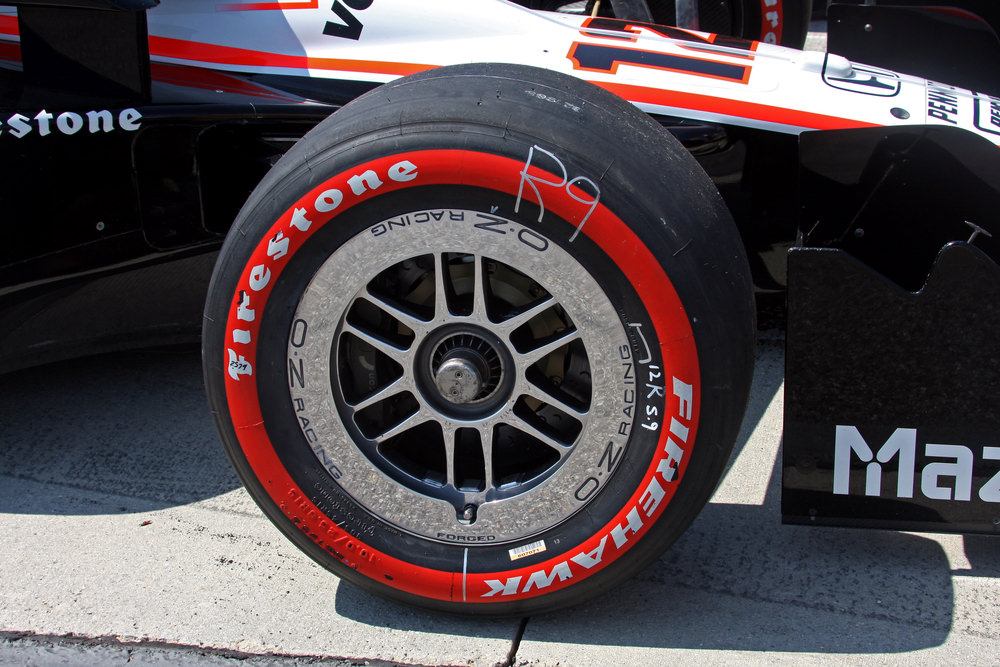 These five are: Checking your tire pressures, rotating your tires, avoiding road hazards, avoiding overloading your tires, and keeping an eye out for recalls.
These five are: Checking your tire pressures, rotating your tires, avoiding road hazards, avoiding overloading your tires, and keeping an eye out for recalls.
Keep in mind that there is no sure way to prevent a puncture, there are simple little things you can do that will help lower the risks of getting a puncture.
Checking Your Tire PressuresMaintaining the correct tire pressure is one of the most important things you can do when it comes to vehicle maintenance. Both too much tire pressure and too little tire pressure can cause a puncture or blowout.
Too much tire pressure is more likely to give you a puncture because the tire is not able to give way when it hits a foreign object. Whereas too little tire pressure can put the tire’s sidewalls at risk of punctures. Not only is this worse because a sidewall puncture is irreparable, but the sidewall is also more vulnerable because it doesn’t have a steel belt.
Furthermore, incorrect tire pressures can cause blowouts because the tire is incapable of shedding excess heat. It is important to check your tire pressures at least once a month to make sure they are correct for your vehicle. Remember the correct pressure is not the one listed on the tire but rather it is the pressure listed on the door jamb sticker or in the vehicle’s manual.
It is important to check your tire pressures at least once a month to make sure they are correct for your vehicle. Remember the correct pressure is not the one listed on the tire but rather it is the pressure listed on the door jamb sticker or in the vehicle’s manual.
You might be asking yourself what rotating your tires has to do with punctures. It all comes down to the tread. The tread of your tire is what makes contact with the road. Along with providing traction and water displacement, it is there to protect the internal parts of the tire from forging object damage.
If you do not rotate your tires, the tread will wear unevenly and become worn out faster in certain areas. When this happens, there is less protection for the tire which results in more punctures that would normally not affect the tire.
Avoid Road HazardsThis is a pretty straightforward one, right? Just don’t drive through debris on the road. Well, yes, but it’s a little more complicated than that. Obviously, we are all going to steer clear of any major debris on the road, but what about the debris you can’t see?
Well, yes, but it’s a little more complicated than that. Obviously, we are all going to steer clear of any major debris on the road, but what about the debris you can’t see?
The shoulders of a lot of highways and roads are littered with small debris you cannot see from the driver’s seat. steering clear of any shoulders and gutters will dramatically reduce the risk of a puncture. Furthermore, always try to avoid any kind of object on the road, even if it looks like a smooth plank or an empty box, it could have nails in it.
Don’t Overload Your TiresJust like increasing the pressure in your tires, overloading your tires will increase the chance of a puncture. Additionally, you run the risk of a blowout when you overload your tires, so not a good choice overall.
Watch For RecallsSometimes things just go wrong from the manufacturer’s side of things. For this reason, I like to keep an eye on recalls for both my vehicle and tires. Sometimes a tire does not hold up as it is advertised which could result in more punctures.
Sometimes a tire does not hold up as it is advertised which could result in more punctures.
There are websites you can sign up to so that when the tires get recalled you get an email about it. Even if you don’t have any issues with your tires, it’s a good idea to recall them if you can. Not only is it safer but you get a free set to replace them!
ConclusionTo sum it all up, you can only patch a tire if the damage is more than half an inch from the edge of the steel belt found in the tread. It is recommended that the tire be removed and inspected to make sure that the puncture is in the repairable area.
If the puncture is less than half an inch or is on the shoulder or sidewall of the tire, the tire cannot be repaired. The side wall and shoulder are structurally critical to the integrity of the tire. Thus, it is a safety issue if they are damaged.
Furthermore, if the puncher is larger than a quarter of an inch, or has cut through the steel belt, the tire cannot be repaired.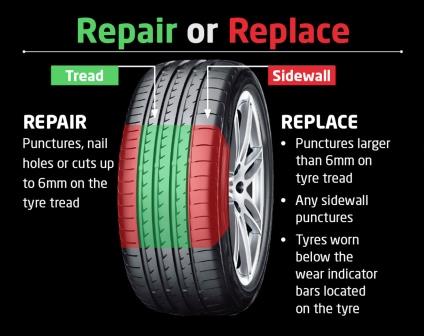 Finally, the best thing you can do to keep your tires in good condition is to maintain proper tire pressure.
Finally, the best thing you can do to keep your tires in good condition is to maintain proper tire pressure.
Damage of any kind can result in negative consequences that affect driving safety and road holding. And if the majority of punctures can be repaired in the service or repaired by oneself, then the side cut of the tire often forces one to resort to a complete tire replacement. Riding on damaged tires in the usual mode is extremely dangerous. How to fix a tire so that you can ride comfortably without consequences, and is it possible to seal or repair a cut tire? We will answer these and other relevant questions for motorists in this material.
Modern services can repair a tire after a front or side puncture.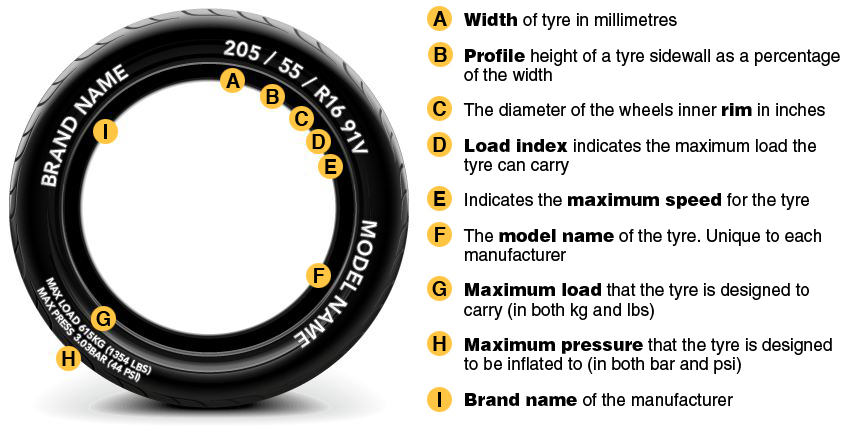 You can repair a tire, thanks to the universal set of a motorist, with your own hands. It is enough to seal the hole with a special tourniquet.
You can repair a tire, thanks to the universal set of a motorist, with your own hands. It is enough to seal the hole with a special tourniquet.
Is this type of damage dangerous and should it be replaced? Only the master can unambiguously answer the question, having studied the lateral damage. The specialist will determine the nature of the puncture that needs to be repaired and offer a complete tire replacement or repair. It is inexpedient and dangerous to close up a large puncture, due to which the tire is deformed.
To determine how to repair a side cut, you need to study the type of damage:
Sealing a cut on a tire is much more difficult than a normal repair, so it is often necessary to perform an involuntary replacement of tires. Repairing the wheel is impossible due to side wires and threads that break under side load. Taping and repairing lateral damage will not help repair the threads. Any obstacle or potential contact with a bump at high speed will have the adverse effect of bursting the tire due to the load, resulting in a dangerous loss of control.
Repairing the wheel is impossible due to side wires and threads that break under side load. Taping and repairing lateral damage will not help repair the threads. Any obstacle or potential contact with a bump at high speed will have the adverse effect of bursting the tire due to the load, resulting in a dangerous loss of control.
A side puncture is less dangerous than a longitudinal cut. However, not every defect requires replacement. Masters will be able to repair tires if the deformed area placed along the carcass threads does not exceed 50 mm. The possibility of repair is also available if the side cut located across the tire threads is less than 30 mm. However, we do not recommend doing repairs in this case with your own hands. To preserve the protective properties and avoid possible negative consequences, it is necessary to use professional equipment.
Should cuts be repaired? A popular question for motorists who are faced with a choice is whether to seal a defect or replace a wheel. The possible consequences of cuts scare car owners, but do-it-yourself repairs are more attractive because they are cheaper than buying fresh tires.
The possible consequences of cuts scare car owners, but do-it-yourself repairs are more attractive because they are cheaper than buying fresh tires.
To avoid dangerous consequences, sealing small and large side cuts is prohibited if you need to repair more than 10 cords and close up a hole larger than 30 mm. It is possible to repair tires for passenger cars with a side cut of the tire if it is a shallow scratch.
Driving with a cut in a tire is not safe. The degree of risk depends on the nature of the damage and the experience of the specialist who will seal the seam. Before sealing the hole with your own hands or entrusting a restoration to a specialist, you should examine the lateral damage. Manufacturers recommend replacing tires if it is necessary to seal 20 mm or more. However, if it is possible to change a wheel, the opportunity should be taken as soon as possible. Since even a small defect is dangerous during the trip. During operation, a hernia is formed, which explodes if timely replacement is not made. If you drive on a tire with a side cut for a long time and do not do repairs in the service or with your own hands, there is a high risk of getting into an accident.
If you drive on a tire with a side cut for a long time and do not do repairs in the service or with your own hands, there is a high risk of getting into an accident.
In order to strengthen the structure of tires, manufacturers add several layers of metal cord to models. Also on the market there is a fabric cord, which includes fibers from nylon, which allows you to increase the strength of rubber. Therefore, in order to seal the tire in the service or repair it yourself in case of a puncture, it is necessary to use high-quality materials. If the recommendations for replacement are not followed, there is a high risk of dangerous and unpredictable consequences.
Summer Drive Protection Sound Comfort
Rating:
4.5
Tires Goodyear Eagle F1 Asymmetric 3 SUV
Summer Drive protection
Rating:
4. 5
5
Tires Goodyear Eagle Sport TZ
Summer Drive protection
Rating:
4.5
Tires Goodyear EfficientGrip 2 SUV
Summer Drive Protection Run On Flat
Rating:
4.5
Tires Goodyear EfficientGrip Performance
Winter Drive protection
Tires Goodyear UltraGrip Arctic 2 SUV
Winter Drive Protection Sound Comfort
Rating:
4. 5
5
Tires Goodyear UltraGrip Ice 2
Winter Drive Protection Sound Comfort
Rating:
4.5
Tires Goodyear UltraGrip Ice SUV
Winter Drive protection
Tires Goodyear UltraGrip Performance+ SUV
All season Drive Protection
Rating:
5
Tires Goodyear Vector 4Seasons Gen-3 SUV
Summer Drive Protection Run On Flat
Rating:
4
Tires Goodyear Wrangler HP All Weather
All season Drive Protection
Rating:
4. 5
5
Tires Goodyear Vector 4Seasons
Summer
Rating:
4.5
Tires Goodyear Wrangler All-Terrain Adventure with Kevlar
Summer Drive Protection
Rating:
4.5
Tires Goodyear EfficientGrip SUV
Summer Drive Protection Run On Flat
Rating:
4
Tires Goodyear Eagle F1 Asymmetric SUV
In order to reliably assess the consequences of tire deformation, before repairing the tire, contact a specialized center.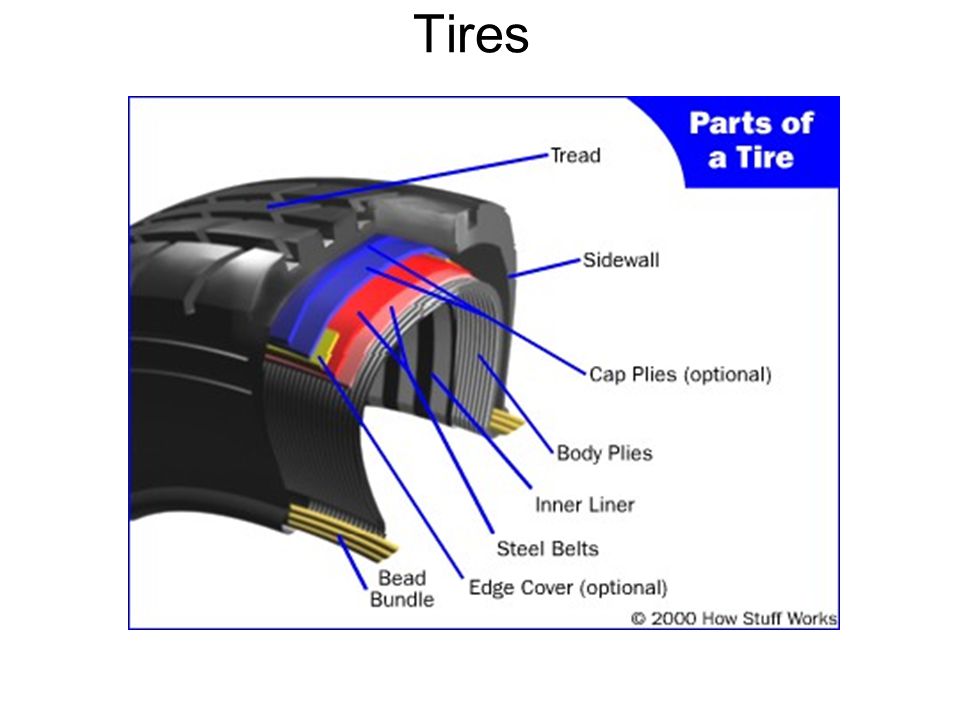 The masters will figure out whether it is possible to continue driving a car or whether it is worth replacing the rubber. The main inspection criterion is the width of the seam that needs to be repaired. It should be borne in mind that it is dangerous to close up and seal holes with a width of more than 40 mm with rubber mixtures.
The masters will figure out whether it is possible to continue driving a car or whether it is worth replacing the rubber. The main inspection criterion is the width of the seam that needs to be repaired. It should be borne in mind that it is dangerous to close up and seal holes with a width of more than 40 mm with rubber mixtures.
If the masters decide to restore the tire and make a patch, then the restoration process includes the following steps:

The decision to patch should be made by experienced professionals who will be able to advise whether to patch or replace tires. Restoration of rubber, despite the observance of technology, cannot restore the original properties of the carcass, so you should drive carefully on such rubber.
It is also worth considering that if you do the restoration of a tire, it is necessary to break in before active operation. To avoid negative consequences, we do not recommend moving at high speeds.
KrasnodarArmavirGelendzhikTuapseSochiNovorossiyskBelorechenskMaikopRostov-on-DonSimferopolStavropolAstrakhanst. Kanevskaya station Vyselkist Dinskaya Volgograd Voronezh
TSC No. 13 pos. Verkhnebakansky, st. Bakanskaya, 8A
+7 (928) 331-07-76
Around the clock
TSC No. 29, Volgograd, 30th Anniversary of Victory Blvd. , 9
, 9
+7 (937) 088-44-27
Mon-Fri from 09.00 to 20.00, Sat from 9.00 to 19.00, Sun from 10.00 to 18.00
TSC No. 28, Rostov-on-Don, st. Dovatora, 159
+ 7 (988) 997-61-11
Mon-Fri from 09.00 to 20.00, Sat from 9.00 to 19.00, Sun from 10.00 to 18.00
TSC No. 18, Krasnodar, Berezovy village, Karl Gusnik st., 17
+ 7 (938) 538-53-11
Mon-Fri 9:00 - 20:00; Sat 9:00 - 19:00; Sun 10:00 - 18:00
TSC No. 27, Sochi, Batumi Highway 94/20
+7 (928) 272-72-55
Mon-Fri from 09.00 to 20.00, Sat from 9.00 to 19.00, Sun from 10.00 to 18.00
TSC-26 Voronezh, st. Volgogradskaya 30
+7 (930) 406-78-84
Mon-Fri from 9.00 to 18.00
TSC No. 25, Volgograd, Bureyskaya st., 8
25, Volgograd, Bureyskaya st., 8
8 (937) 088-42-78
Mon-Fri from 9.00 to 18.00
TSC No. 22, Stavropol, ave. Kulakova, 18
+7 (938) 517-77-03
Mon-Fri from 9.00 to 18.00
TSC №21 Armavir, Efremova 319
+7 (918) 322-76-38
Mon-Fri from 09.00 to 20.00, Sat from 9.00 to 19.00, Sun from 10.00 to 18.00
TSC No. 19, Krasnodar, st. Selezneva 197/5
+7 (989) 169-34-16
Mon-Fri 9:00 - 20:00; Sat 9:00 - 19:00; Sun 10:00 - 18:00
TSC No. 17 Astrakhan, 1st passage Rozhdestvensky 11a
+7 (988) 172-66-88
Mon-Fri from 9.00 to 18.00 Sat-Sun day off
TSC No. 16, Rostov-on-Don, st. Dovatora, 154/5
+7 (989) 527-11-86
Mon-Fri from 9. 00 to 18.00 Sat-Sun day off
00 to 18.00 Sat-Sun day off
TSC No. 15 st. Vyselki st. Luneva, 29a
+7 (918) 199-67-89
Mon-Fri from 9.00 to 18.00, Sat from 10.00 to 15.00, Sun from 10.00 to 15.00
TSC No. 14 Crimea, Simferopol, 11 km. Moscow highway
+7 (938) 517-77-82
Mon-Fri from 9.00 to 18.00 Sat, from 10.00 to 15.00, Sun closed
TSC No. 12, Gelendzhik, st. Lunacharskogo, 310A
+7 (918) 027-88-99
Mon-Fri from 09.00 to 20.00, Sat from 9.00 to 19.00, Sun from 10.00 to 18.00
TSC No. 11 st. Kanevskaya, st. Sverdlikova, 277d
+7 (988) 312-97-70
Mon-Fri from 09.00 to 20.00, Sat from 9.00 to 19.00, Sun from 10.00 to 18.00
TSC No. 10, Krasnodar, st. Russian, 339
+7 (989) 298-90-17
Mon-Fri 9:00 - 20:00; Sat 9:00 - 19:00; Sun 10:00 - 18:00
TSC No. 9, Tuapse, p. Kroyanskoe, st. Solnechnaya, 1B
9, Tuapse, p. Kroyanskoe, st. Solnechnaya, 1B
+7 (918) 060-47-17
Mon-Fri 9:00 - 20:00; Sat 9:00 - 19:00; Sun 10:00 - 18:00
TSC No. 8, Krasnodar, st. Stavropolskaya, 214/5
+7 (918) 060-47-08
Mon-Fri 9:00 - 20:00; Sat 9:00 - 19:00; Sun 10:00 - 18:00
TSC No. 7, Krasnodar, st. Dinskaya, Federal highway M4 1308 km, 3
+7 (918) 060-47-07
Around the clock
TSC No. 6, Belorechensk, st. May Day, 122
+7 (988) 369-96-37
Mon-Fri from 09.00 to 20.00, Sat from 9.00 to 19.00, Sun from 10.00 to 18.00
TSC No. 5 Maykop, st. Hakurate, 555
+7 (918) 060-47-05
Mon-Fri 9:00 - 20:00; Sat 9:00 - 19:00; Sun 10:00 - 18:00
TSC No.